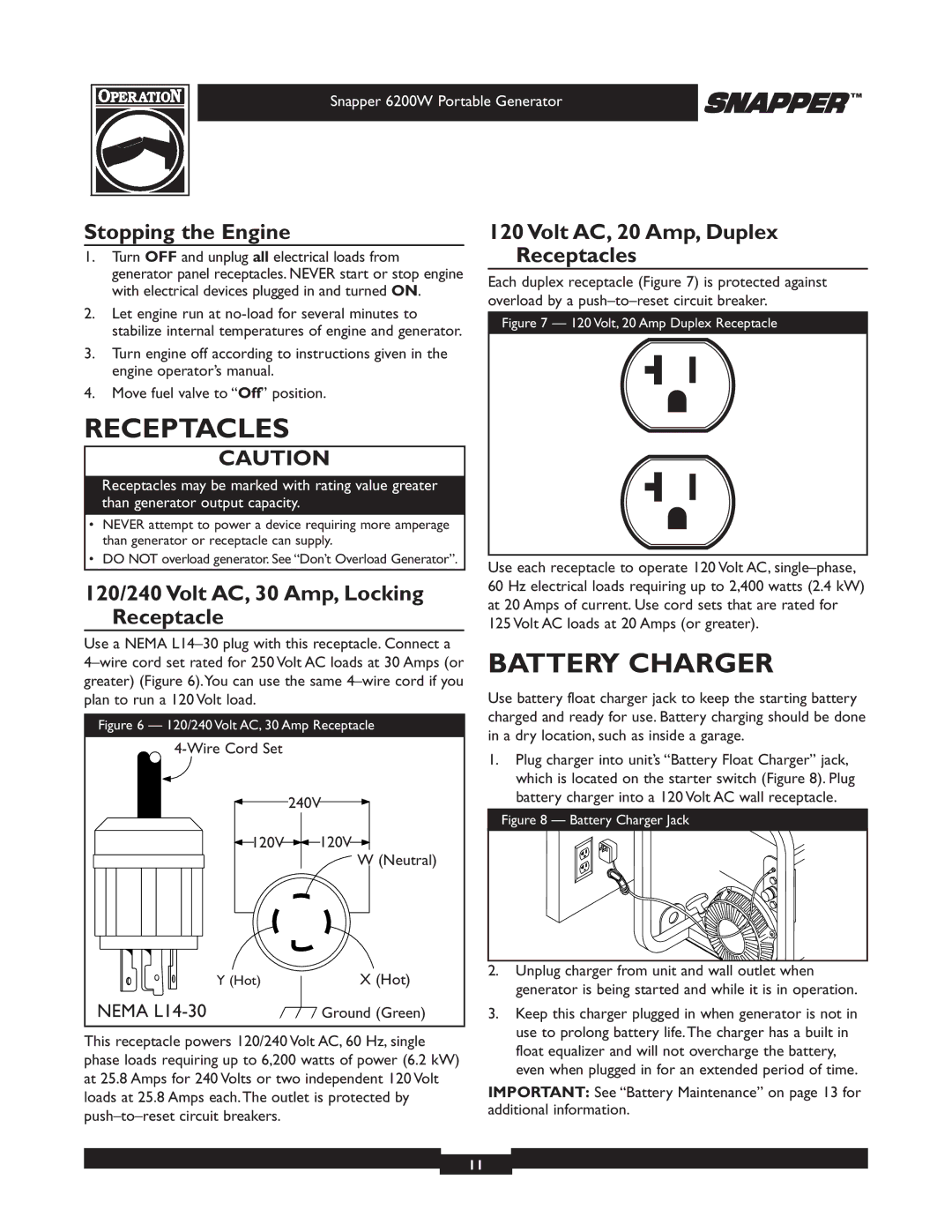
Snapper 6200W Portable Generator
Stopping the Engine
1.Turn OFF and unplug all electrical loads from generator panel receptacles. NEVER start or stop engine with electrical devices plugged in and turned ON.
2.Let engine run at
3.Turn engine off according to instructions given in the engine operator’s manual.
4.Move fuel valve to “Off” position.
RECEPTACLES
CAUTION
Receptacles may be marked with rating value greater than generator output capacity.
•NEVER attempt to power a device requiring more amperage than generator or receptacle can supply.
•DO NOT overload generator. See “Don’t Overload Generator”.
120/240 Volt AC, 30 Amp, Locking Receptacle
Use a NEMA
Figure 6 — 120/240 Volt AC, 30 Amp Receptacle
240V
120V ![]() 120V
120V
W (Neutral)
Y (Hot) | X (Hot) |
NEMA | Ground (Green) |
This receptacle powers 120/240 Volt AC, 60 Hz, single phase loads requiring up to 6,200 watts of power (6.2 kW) at 25.8 Amps for 240 Volts or two independent 120 Volt loads at 25.8 Amps each.The outlet is protected by
120 Volt AC, 20 Amp, Duplex Receptacles
Each duplex receptacle (Figure 7) is protected against overload by a
Figure 7 — 120 Volt, 20 Amp Duplex Receptacle
Use each receptacle to operate 120 Volt AC,
BATTERY CHARGER
Use battery float charger jack to keep the starting battery charged and ready for use. Battery charging should be done in a dry location, such as inside a garage.
1.Plug charger into unit’s “Battery Float Charger” jack, which is located on the starter switch (Figure 8). Plug battery charger into a 120 Volt AC wall receptacle.
Figure 8 — Battery Charger Jack
2.Unplug charger from unit and wall outlet when generator is being started and while it is in operation.
3.Keep this charger plugged in when generator is not in use to prolong battery life.The charger has a built in float equalizer and will not overcharge the battery, even when plugged in for an extended period of time.
IMPORTANT: See “Battery Maintenance” on page 13 for additional information.
11
